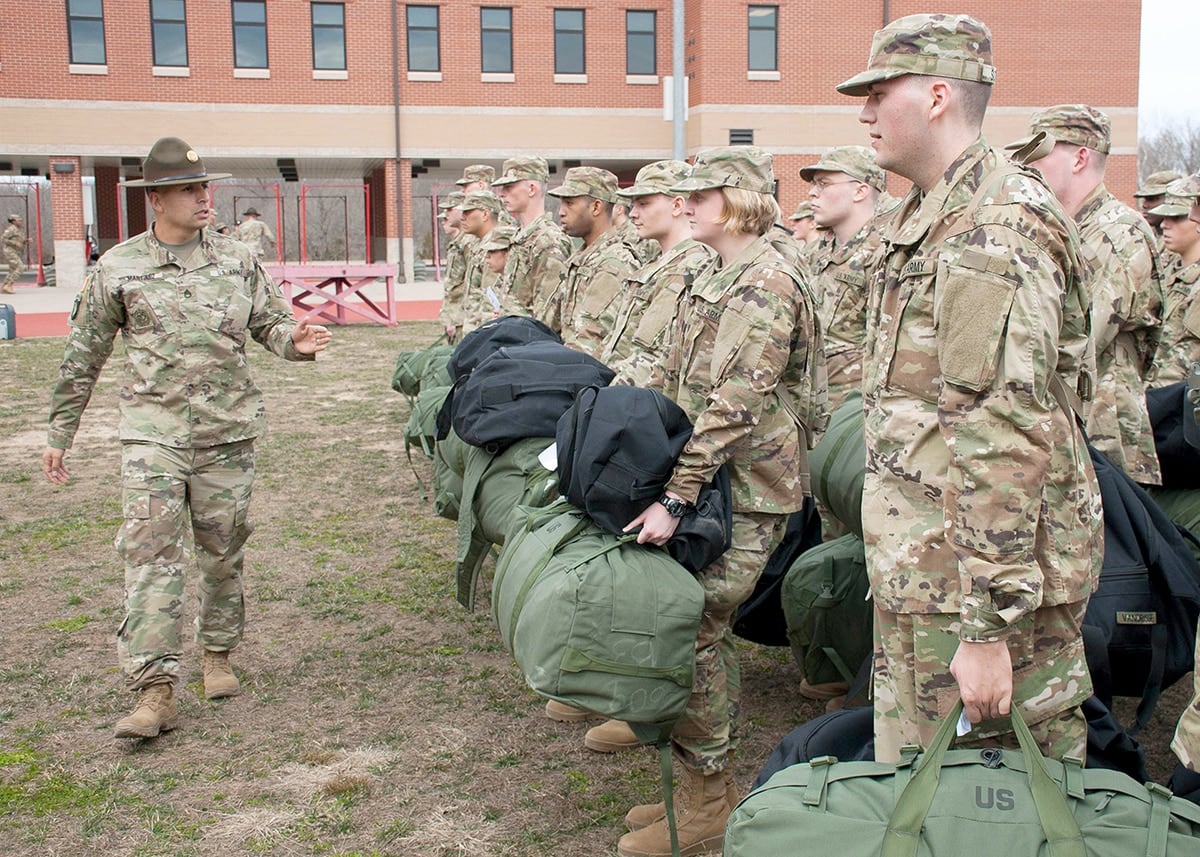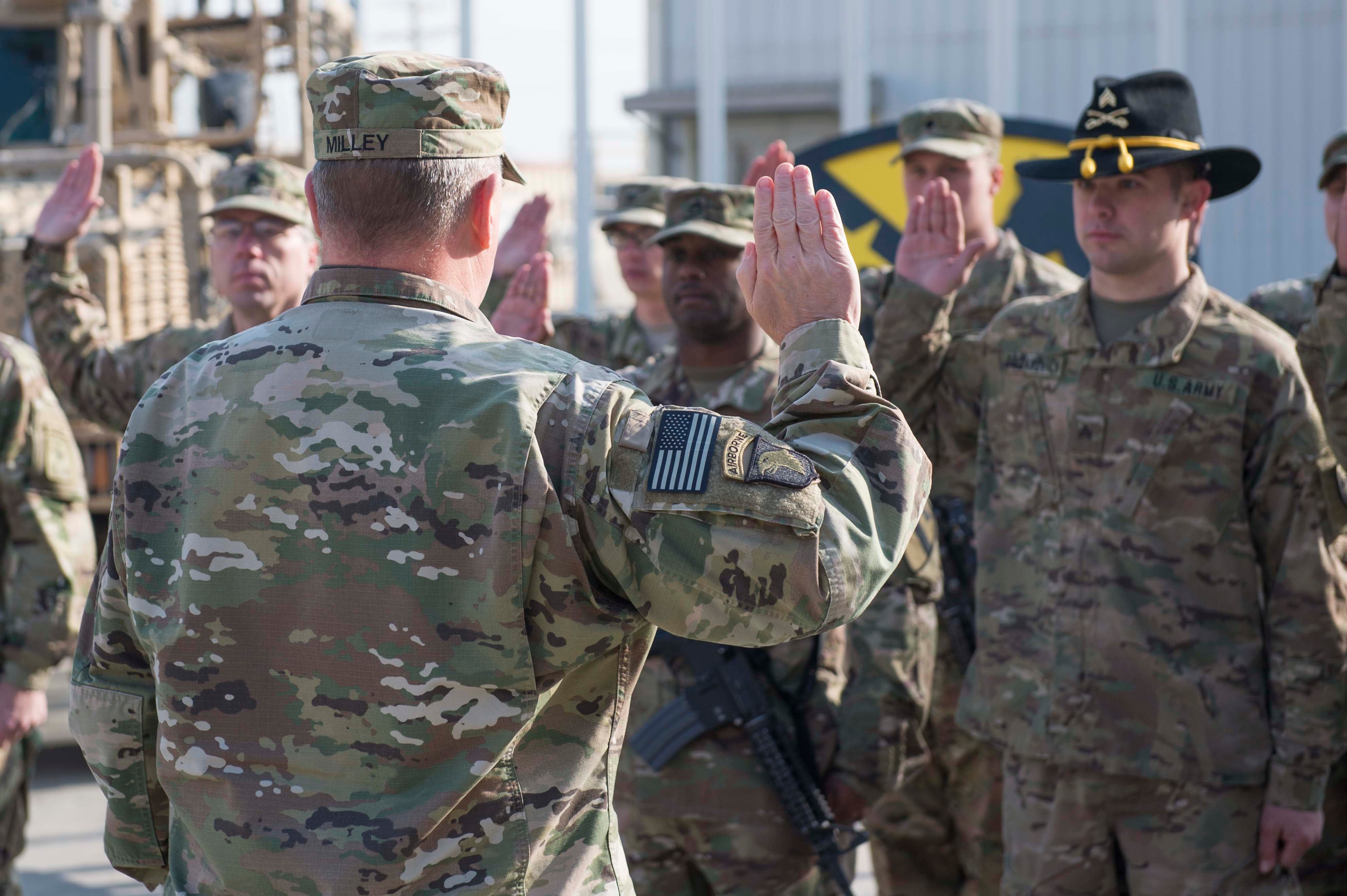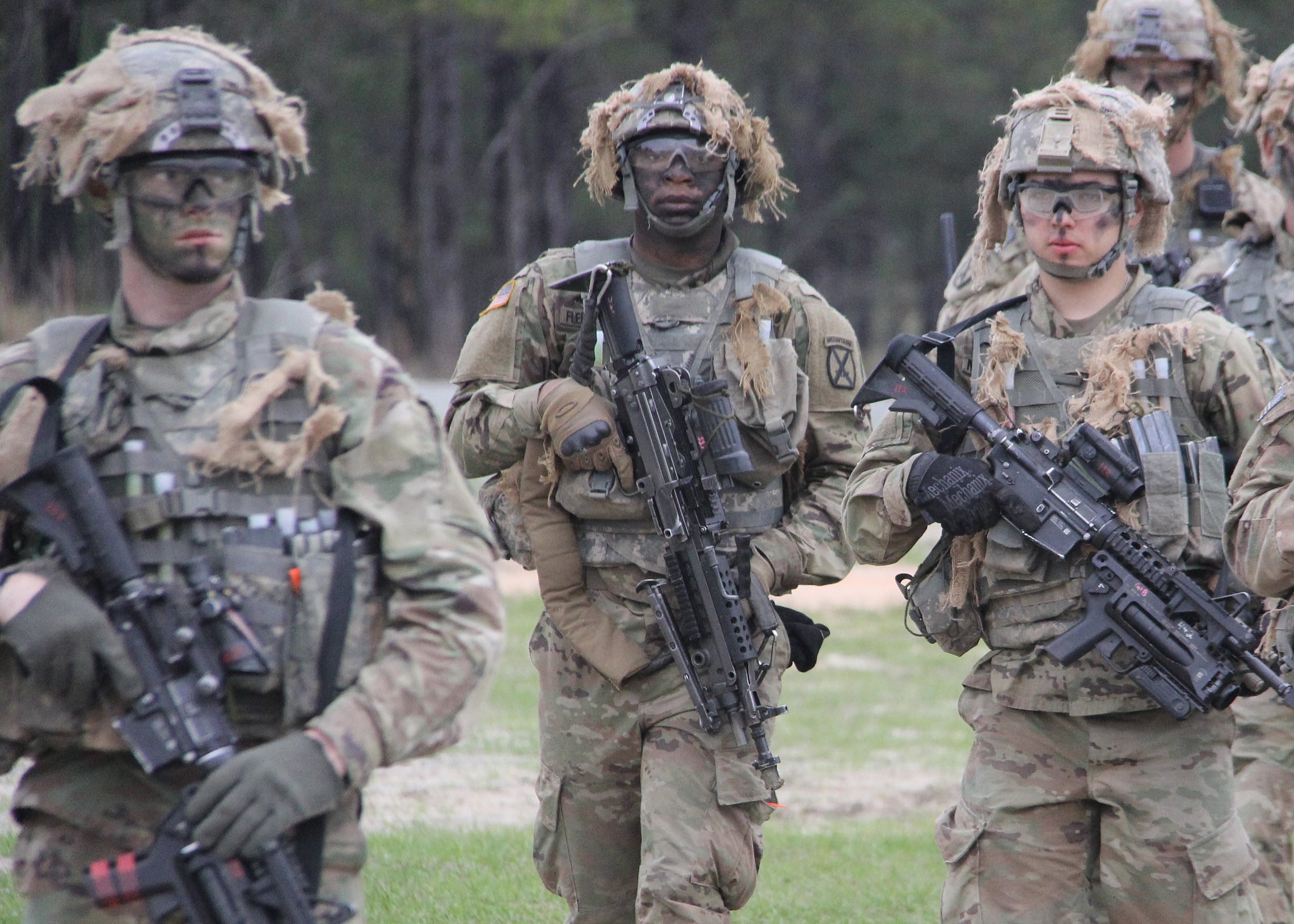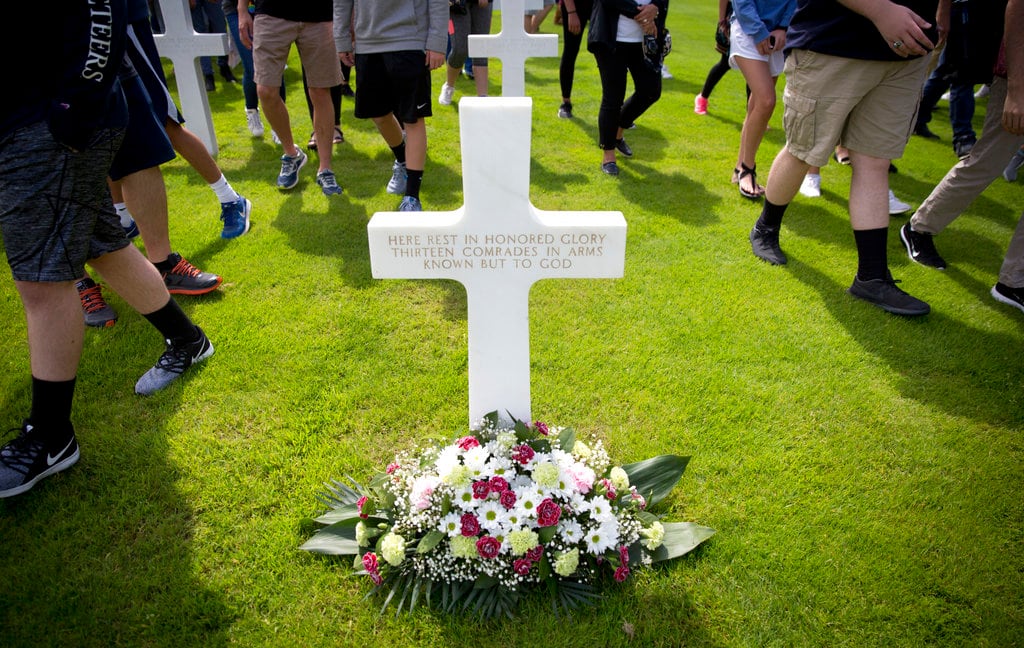The Army has a mandate to get to 1,018,000 soldiers — 476,000 of those active duty — by the end of September.
To get there, the service is doing almost everything it can, from offering generous cash bonuses to giving second chances to officers who've been passed over for promotion.
But unlike previous build-ups, the service isn't dropping enlistment standards or making exceptions to keep unqualified soldiers on the rolls. This has translated into big bucks and major incentives, as well as a fast-track to active duty, for some soldiers.
"It doesn't seem like big numbers, but because we don't have stop-loss or the draft, this is big," Sergeant Major of the Army Dan Dailey told Army Times earlier this year.
The effort started with big bonuses to keep enlisted soldiers in the Army and has spread up and down the ranks, even saving the careers of some O-6s.
In total, the active force must jump from a planned 460,000 soldiers to 476,000; the National Guard from 335,000 to 343,000; and the Army Reserve from 195,000 to 199,000.
As of June 2, the active Army has reached 55 percent of its recruiting and 73 percent of its retention goals, according to personnel officials.
Here's how they've done it and what they plan to do with all those extra soldiers.
Retaining talent
Every year, the Army offers selective retention bonuses to in-need military occupational specialties, but this year, the flood gates opened.
In January, the retention office announced $10,000 bonuses for any soldier with the option to separate in fiscal year 2017, regardless of MOS, rank or special skills, who agreed to stay for one more year. That dropped to $5,000 in April, when the Army decided to shift its focus to locking soldiers in for longer terms.
"We got indications from the field that, with the extension bonus, we've probably achieved all we're going to achieve, so let's redirect that to re-enlistment," Dailey said in May.
SRBs have fluctuated several times throughout the year, adding and subtracting certain MOSs, ranks and skill levels based on need. The most recent tweak, in May, resulted in 22 MOSs getting dropped from the list — including junior infantrymen — but increased pay-outs of up to $90,000, for everyone still eligible.
There are also opportunities for soldiers to put off their next permanent change of station move based on the length of their re-enlistment.
"And that’s a result of asking through the chain of command," Dailey said. "We actually asked. We said, ‘What is it that would keep you on the team?’ And they said, ‘Well, if I got to stay where I am.’ "
Soldiers are eligible for up to 18 months of stabilization with a three-year re-enlistment. For every six months more on the enlistment contract, stabilization goes up another year, capping out at three extra years at a duty station.
Recruitment surge
For those thinking of joining this year, the message has been resounding.
"The Army’s hiring," Maj. Gen. Jason Evans, the head of Human Resources Command, told Army Times in March, when he was director of military personnel management in the Army G-1. "We’re doing this responsibly with a focus on quality."
To recruit 6,000 more soldiers this year than originally planned, new enlistees in 94 eligible MOSs have the option to sign up for just two years and pocket up to a $40,000 bonus, the deputy commanding general of Army Recruiting Command told Army Times in February.
"They’re going, ‘Four years? Six years?’" Brig. Gen. Donna Martin said of the average young person considering enlisting. "That seems like forever, right?"
But now, the motivated recruit looking to move on and head to college by age 20, for example, is able to do two years in the Army and get out with 80 percent of their GI Bill benefits.
It’s a very quick offer for the purposes of growing the Army this year, but leadership is counting on a good portion of those recruits falling in love with the service and staying on.
"Not until after those two years did I realize, this is my calling," Dailey said of his original enlistment, one of the several times the Army has offered two-year contracts. "Had I not been afforded that opportunity, maybe to somebody’s benefit now, I might not have been the sergeant major of the Army."

Staff Sgt. Jerome Martinez, a drill sergeant with the 31st Engineer Battalion, lines up his new soldiers at Fort Leonard Wood, Missouri. The post is beefing up its basic training capacity in order to train more incoming soldiers as the Army continues to grow.
Photo Credit: Stephen Standifird/Army
And more recruits means more recruiters, so the Army set a goal to get 600 more personnel to recruiting stations while offering them an extra $500 a month for up to a year.
Beyond that, 79R professional recruiters are eligible for a fat re-enlistment bonus — between $9,800 and $36,800 based on rank and number of years on the contract.
As of June 6, USAREC was at 54 percent of its active duty and 66 percent of its reserve component goal for the fiscal year, spokesman Brian Sutton said.
The numbers might seem low for having a little less than four months left to make their numbers, but that percentage is standard for this time of year.
"If you were to look at a year-by-year chart of our 12-month period of recruiting, we have something that we call our bath tub months in late winter, early spring," Sutton said.
As high school graduations wrap up, recruiting numbers tend to spike, first for those who were waiting to finish school to sign up, then later as people enjoy their first few months out of school but come to the realization that it’s time to take the next step.
"There is a push, I think, in the minds of a young person, that they’re going to have to figure out a path for the future," Sutton said. "Really, we’ve got our biggest months ahead of us for recruiting numbers."
Go active duty
Because the active component needs to add 16,000 bodies to the rolls this year, the Army figured it could get the Army Reserve and National Guard to their new end strength numbers while enticing some soldiers from the reserve component to go active duty.
"One of the fundamental changes that is bigger than we had anticipated is the call to active duty of our officers," Lt. Gen. Thomas Seamands, then the head of Human Resources Command, told Army Times in April.
Up until late last year, the Army had spent years drawing down the total force to get to 980,000, Seamands said, much of that by asking active duty soldiers to transfer to the reserve component.
"Now that the force is getting larger, we’re asking for officers and NCOs in the reserve component to consider going on active duty," he said.
The original goal was to add a couple hundred, but almost 1,000 packets came in, and Seamands said they were prepared to accept the majority of them.
Reserve component soldiers have until July to contact a local recruiter and get a packet in.
"They’ll come into a unit, they’ll be ready on day one to go out and lead soldiers," Seamands said. "Many of them, I suspect, will return to the reserve component in three or four years to continue their Soldier for Life approach to what they’re doing, having had the additional experience and education having been an active duty soldier."
Recruiters have also put the feelers out to recently separated soldiers.
"We’re focusing our recruiting effort on prior service personnel, for those who have separated honorably," Evans said.
Returning soldiers would just need to complete a two-week re-greening course via Training and Doctrine Command.
"About 7,000 have separated in the last year, and we’d like to tap into that population of folks to see them come back in," Evans added.
Saved by the build-up
Reversing the drawdown has almost meant reversing some of the force-shaping measures that ended careers early in recent years.
A colonel selective early retirement board scheduled for this year — to force out O-6s not likely to pin on a star — has been delayed, Evans said.
"Those officer separation boards and the colonel selective early retirement board we had scheduled for this year or next year, we’ve turned those off," he said. "We were drawing down to [460,000], but those we don’t need anymore."
And some of the captains who didn’t survive the dreaded O-4 promotion board back in January have a second chance to stay in, he added.
"We went back and held a board that reviewed those. They looked at those that were best qualified to be asked to be retained on active duty," Evans said. "The board selected some number of those, and now HRC is calling them to see if they’d like to select the Army’s offer of continuing on active duty."
If the Army is going to bring in 6,000 new privates, they’re going to need junior officers to lead them, which is the Army’s reason for giving those captains another chance.
As far as lieutenants, there were going to be several hundred would-be O-1s stuck in limbo after graduation this year, Evans said, because the Army had a cap on commissions.
But about 300 spots opened up thanks to the increased end strength.
"We’ve gone back and since asked them if they would like to come on active duty," Evans said, and about 240 will get a spot.

Army Chief of Staff Gen. Mark Milley gives the oath of enlistment to deployed soldiers during a re-enlistment ceremony on Bagram Airfield, Afghanistan. The Army is offering big bonuses to retain 9,000 additional soldiers as part of a 28,000-soldier growth this year.
Photo Credit: Sgt. 1st Class Chuck Burden/Army
Force structure
So where are these tens of thousands of soldiers going to go?
"We have some holes in our formations, in our BCTs, that we will be looking to send our soldiers to," Evans said.
But first, the training base has to expand to accommodate new recruits, he said, which might mean some renovations to buildings, extra full basic training classes and even some expansion of training capacity.
Fort Leonard Wood, Missouri, where soldiers in specialties like military police and combat engineer go for their initial training, will increase its workload by 4,500 soldiers throughout the rest of the fiscal year, the Army said in March.
New soldiers will then be shipped off to BCTs, where the highest priority is armor crewmen, cavalry scouts and tank maintainers for newly converted armored brigades, Evans said.
The next step is securing a budget that will support the new end strength number, followed by a discussion of an even bigger increase.
Army Chief of Staff Gen. Mark Milley and Acting Army Secretary Bob Speer have been making the rounds on Capitol Hill to ask for a $7 billion bump in the budget for fiscal year 2018.
Following a strategic review by the Defense Department, the Army will take another look at its end strength needs and come back next year with new numbers, Milley told the Senate Armed Services Committee on May 25.
Two weeks later, he told the Senate Appropriations Committee that an active Army of 476,000 is not adequate to maintain troops ready to respond to contingencies around the world.
Instead, he floated another set of numbers — between 540,000 to 550,000 soldiers in the active Army, 353,000 to 355,000 in the Guard, and 205,000 to 209,000 for the Reserve.
Meghann Myers is the Pentagon bureau chief at Military Times. She covers operations, policy, personnel, leadership and other issues affecting service members.





